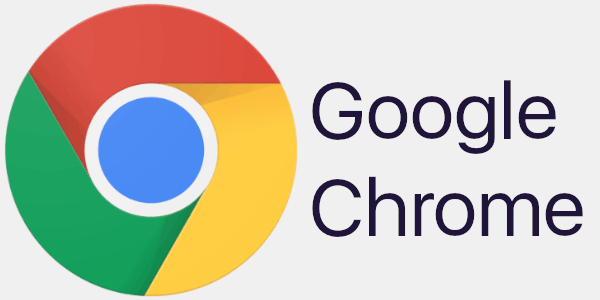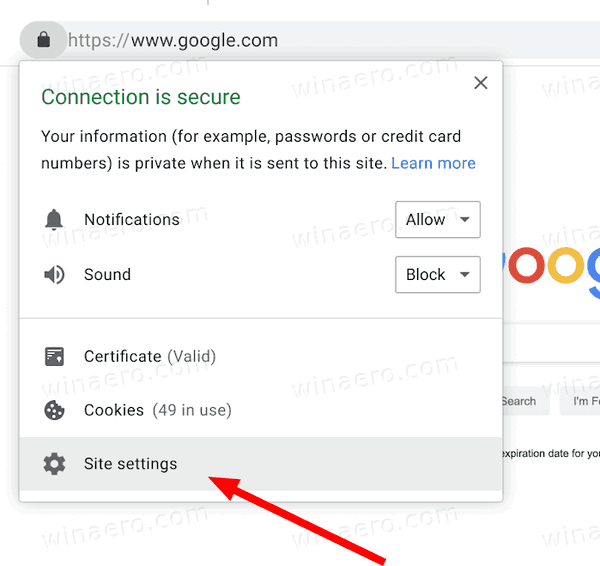Google Chrome 80 is out today. Version 80 comes with the Scroll-To-Text feature, Tab Freezing, Notification restrictions for abusive web sites, Cookie safety improvements, and much more.

Google Chrome is the most popular web browser which exists for all major platforms like Windows, Android and Linux. It comes with a powerful rendering engine which supports all modern web standards.
Advertisеment
Here are the key changes in Chrome 80
Scroll-To-Text
To enable users to easily navigate to specific content in a web page, Chrome includes support for specifying a text snippet in the URL fragment. When navigating to a URL with such a fragment, the browser will find the first instance of the text snippet in the page and bring it into view. Scroll-To-Text was first introduces in Chrome 74 but hidden with a flag.
In Chrome 80, you can uise a link like this:
https://winaero.com/blog/winaero-tweaker-0-16-1-is-out/#:~:text=Tweaker
The page will be automatically scrolled to the first mention of the Tweaker word.
Tab Grouping
For a small select group of users, Google enables a new feature, Tab Grouping. It allows combining mutliple tabs in a group that has its own name and color highlight. This allows visually differentiate tabs and organize them into logical groups.
Third Party Site Cookies
In August 2020, Google announced their 'Privacy Sandbox' initiative, which aims to preserve and protect user's privacy. The cookie processing change is part of this initiative. An official blog post sheds some light on it.
Google will drop support for third-party cookies in the Chrome browser in two years. Also, the company will start limiting cross-site tracking by enforcing its new SameSite rules. This has already happened in Chrome 80.
The SameSite-by-default and SameSite=None-requires-Secure behaviors will begin rolling out to Chrome 80 Stable for an initial limited population starting the week of February 17, 2020.
Fewer Notifications
With Chrome 80, Google is gradually rolls out a new feature - 'Quiet UI'.
To protect notifications as a useful service for users, Chrome 80 will show, under certain conditions, a new, quieter notification permission UI that reduces the interruptiveness of notification permission requests. Immediately after the Chrome 80 release, users will be able to opt-in to the new UI manually in Settings. In addition, the quieter UI will be automatically enabled for users under two conditions. First, for users who typically block notification permission requests and second, on sites with very low opt in rates. The automated enrollment will be enabled gradually after the release while we gather user and developer feedback.
Quiet UI will become available on both Mobile and Desktop platforms. On Desktop, you'll be able to enable a new option: Settings > Site Settings > Notifications > Use quieter messaging.

Enforced HTTPS for Multimedia Objects
Chrome will gradually start ensuring that https:// pages can only load secure https:// subresources. The browser starts blocking mixed content (insecure http:// subresources on https:// pages) by default. This change will improve user privacy and security on the web, and present a clearer browser security UX to users.
Most web sites will continue to work if their subresources are already available over https://.
Mixed audio and video resources will be autoupgraded to https://, and Chrome will block them by default if they fail to load over https://. Users will be able to enable a setting to opt out of mixed content blocking on particular websites in the web site information flyout, by enabling mixed content in 'Site settings'.

FTP is now disabled for a limited number of users
While FTP support remains in Google Chrome, the company is experimenting with completely disabling the aging ftp:// protocol for a small percentage of users. If you are affected by this change, and need to download a file using FTP, run Chrome with the --enable-ftp command line argument. This will unblock FTP file download, but the browser still won't display resources linked in HTML from FTP.
SVG as Favicon
Chrome 80 allows using images in SVG format as favicons with <link rel="icon">. Using a scalable format for favicons allows having fewer such resources in total. For example, a website could have one (or more) hand-tuned icon(s) for small sizes and use a scalable icon as a catch-all.
Other changes
- New API Content Indexing
- New JavaScript operator ??
- Optional chaining: an optional chain is a chain of one or more property accesses and function calls, the first of which begins with the token ?.
- Other JavaScript improvements
- More customizable Sync options.
Download Links
Web installer: Google Chrome Web 32-bit | Google Chrome 64-bit
MSI/Enterprise installer: Google Chrome MSI Installers for Windows
Note: The offline installer doesn't support the automatic update feature of Chrome. By installing it this way, you will be forced to always update your browser manually.
Support us
Winaero greatly relies on your support. You can help the site keep bringing you interesting and useful content and software by using these options:
